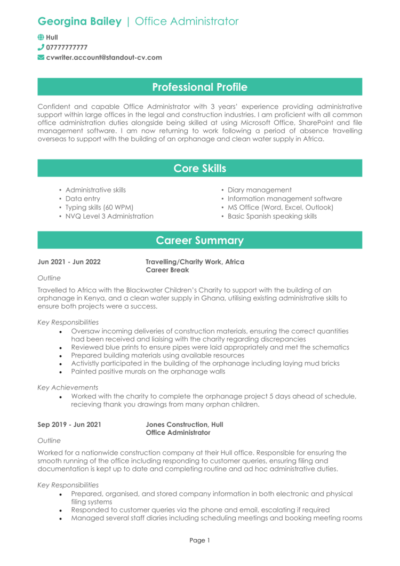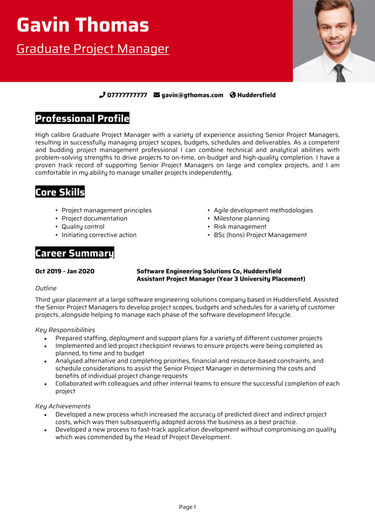Maybe you took time off to raise a family, travel, care for someone, or pursue something personal – but now you’re ready to re-enter the workforce. That break doesn’t define your ability to do the job – it just means your CV needs to tell the full story.
The challenge isn’t your time away – it’s making sure your CV shows everything you still bring to the table. This guide and its Career Break example CV will help you reconnect your experience with your next opportunity and make your return to work smooth and successful.
Career Break CV
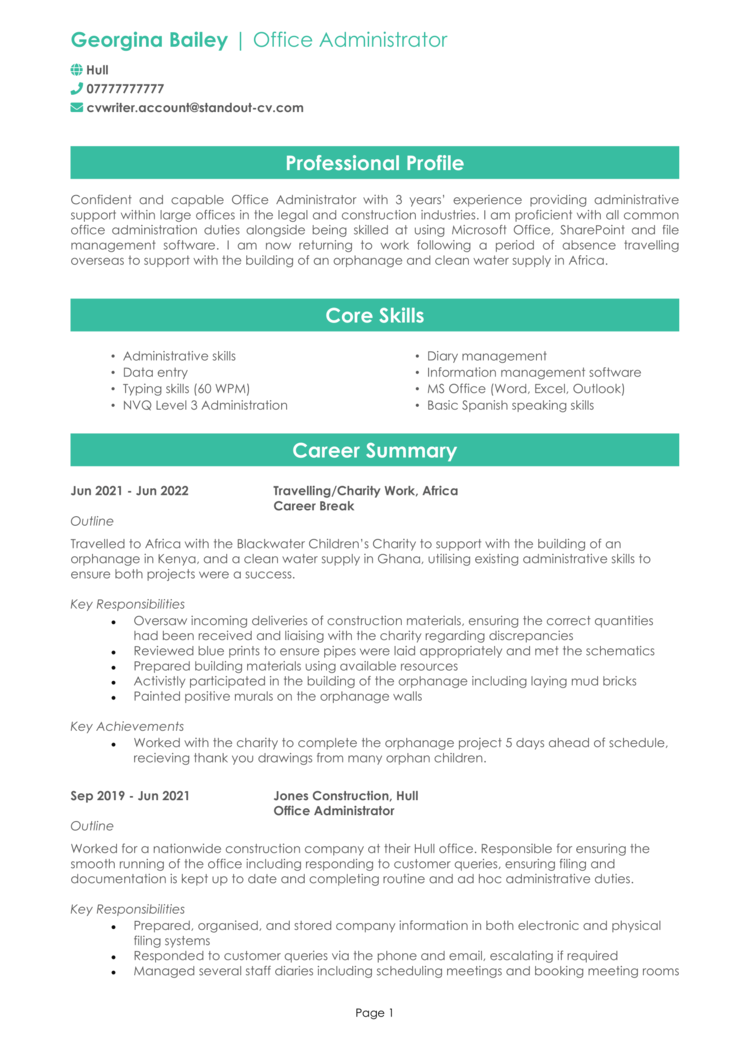
How to write your Career Break CV
Discover how to craft a winning Career Break CV that lands interviews with this simple step-by-step guide.
A career break isn’t a dealbreaker. Employers know that life doesn’t always follow a straight line – and many value the fresh perspective and resilience that time away can bring.
This guide will walk you through writing a CV which positions your break nicely, and shifts the focus back to the value you offer and the direction you’re headed next.
Structuring and formatting your Career Break CV
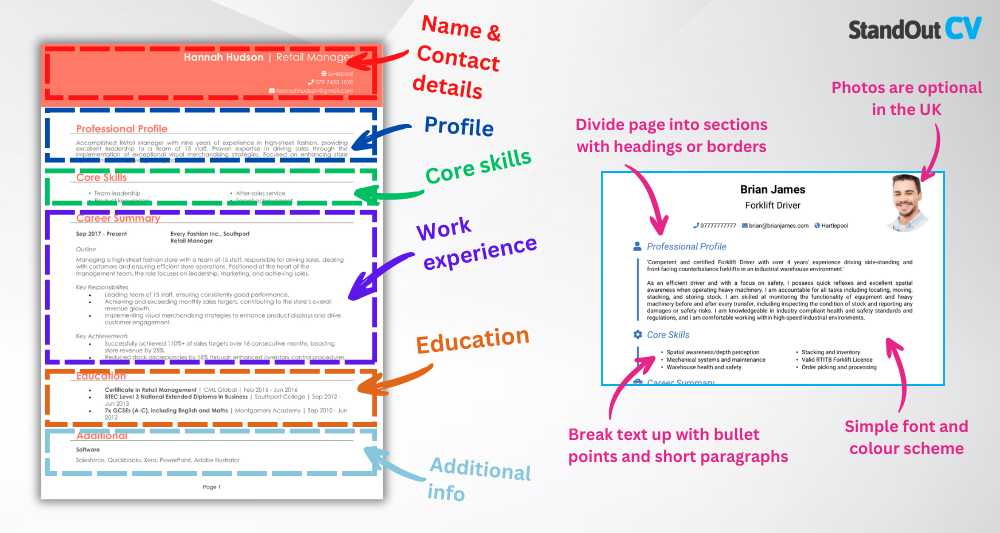
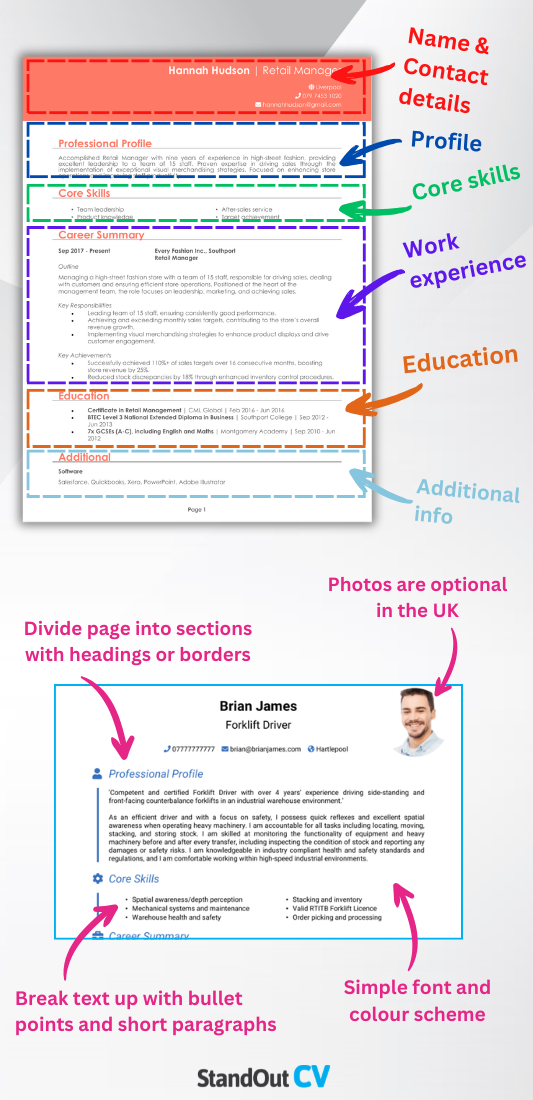
When returning after a break, your CV needs to do two things well: explain the gap, and remind employers of everything else you bring to the table. A clean layout will help make that easy for them, and save them searching through unnecessary details for your value.
Here’s the CV structure to follow:
- Name and contact details – Place your name and personal details prominently at the top of your CV for quick access. Adding a photo is up to you.
- Profile – Open with a compelling introduction that addresses your break and focuses on your strengths.
- Core skills – List the most relevant, transferable skills you bring to the role you’re applying for.
- Work experience – Break down your previous roles in reverse chronological order, and consider adding your career break as its own entry.
- Education & certifications – Include qualifications like a degree, training, or any professional development completed before or during your time away.
- Additional info – Optionally add volunteering, past professional awards, professional memberships or interests, and hobbies and interests that show initiative or personal growth.
Strong formatting can make all the difference when it comes to returning candidates. Keep your CV divided into clearly labelled sections so employers can navigate it with ease, and use bullet points to break up longer paragraphs into digestible highlights.
Stick to a clean, readable font that presents your experience professionally and avoids unnecessary distraction. And finally, keep your CV no longer than two pages – enough length to hold attention, but long enough to do your skills justice: save any more for a cover letter.
The best way to write a Career Break CV profile
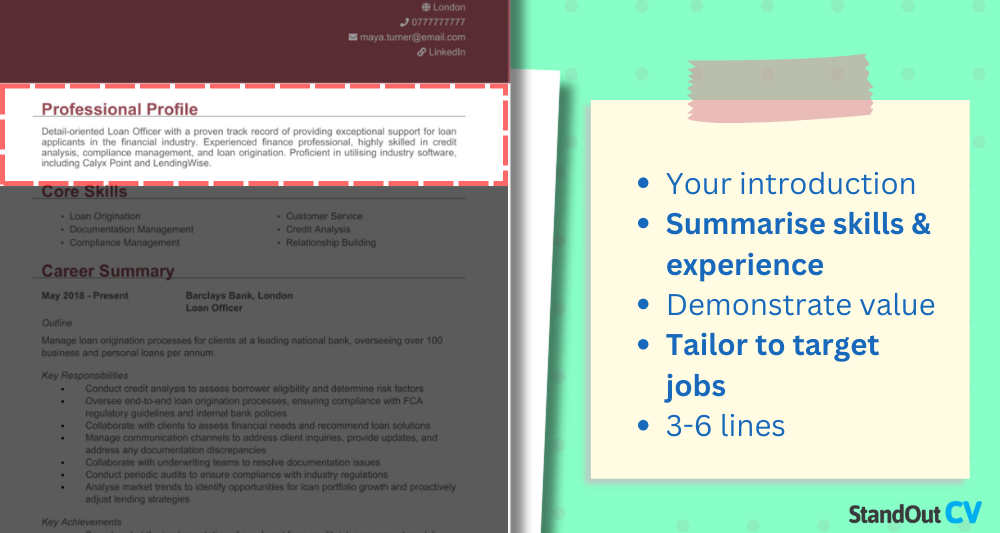
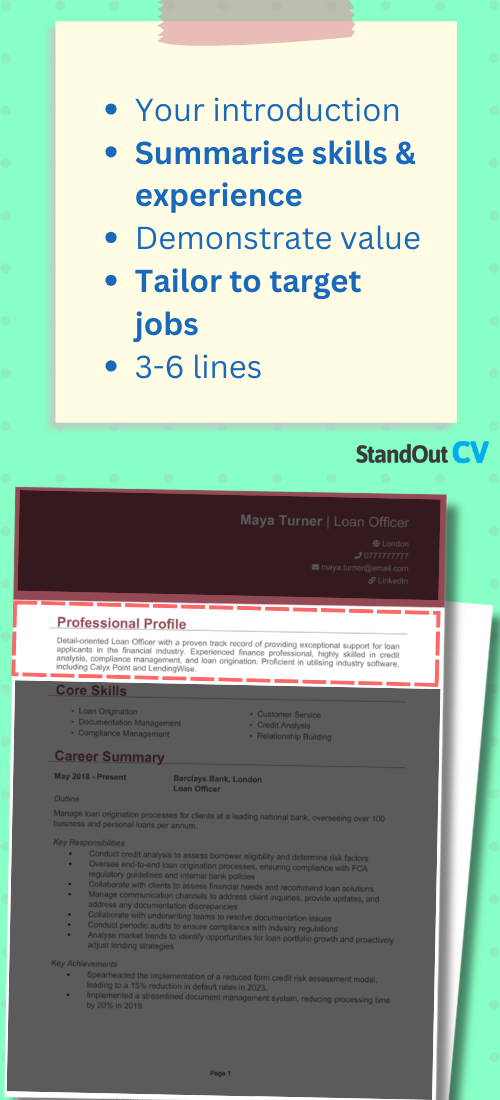
Your CV profile is your chance to reintroduce yourself. Keep it short, confident, and forward-looking. Avoid the mistake of dwelling on the gap or avoiding it entirely: acknowledge it briefly and pivot to what you’re ready to offer now. You want to assure recruiters that you’re more than capable of providing genuine value to their company.
Career Break CV profile examples
Profile 1
Reliable and organised worker returning to the workforce after a planned career break. Previously held roles in administration and customer support, developing strong communication, time management, and problem-solving skills. Used the career break to develop personally and professionally through volunteering and online training. Now ready to re-engage with full-time work and contribute to a professional team environment.
Profile 2
Experienced professional re-entering the job market after taking a career break to focus on family and personal development. Brings a strong foundation in project coordination and stakeholder management. Proactively maintained skills through part-time freelance work and professional development courses. Eager to apply experience in a new role and committed to continuous learning.
Profile 3
Adaptable and proactive individual transitioning back to employment after a career break spent on family responsibilities and volunteering. Formerly worked in customer-facing and administrative roles, gaining valuable experience in organisation, multitasking, and communication. Now seeking to return to a structured role with a renewed perspective and strong motivation.
Details to put in your Career Break CV profile
Here’s what to include:
- Previous experience – Mention your overall career background and key industries.
- The break – A short reference to your time away, with no need for personal details.
- Current strengths – Emphasise the skills and mindset you’re bringing back to the table.
- Future focus – Outline the kind of role or career direction you’re aiming for.
How to present your core skills section properly
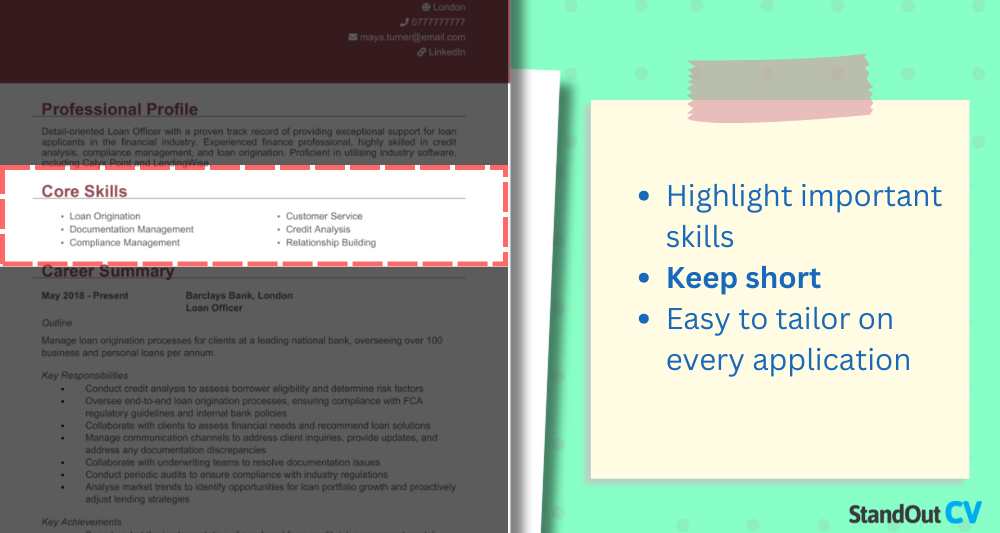

Returning to work doesn’t mean the skills for your CV are outdated – this section proves that what you’ve learned before (and possibly during your break) is still valuable. Focus on skills that are relevant to the job, and that show you’re ready to contribute from day one.
This might include soft skills you’ve maintained or strengthened (like communication or organisation), as well as technical or industry-specific skills you’re updating or refreshing.
Key skills that make a Career Break CV stand out
- Time Management and Organisation – Maintaining structured routines and managing personal or family responsibilities effectively during the break.
- Adaptability and Resilience – Adjusting to life changes and building new routines, demonstrating flexibility and persistence.
- Skill Maintenance and Development – Engaging in online courses, volunteer work, or part-time projects to stay current and continue professional growth.
- Self-Motivation and Initiative – Taking proactive steps to stay productive, learn new skills, or prepare for re-entry into the workforce.
- Project and Household Management – Overseeing tasks such as budgeting, scheduling, and coordinating activities or responsibilities.
- Problem-Solving – Handling daily challenges independently and creatively while managing responsibilities during time away from work.
- Communication Skills – Effectively engaging with service providers, community groups, educational institutions, or family networks.
- Planning and Goal Setting – Creating short- and long-term goals to stay focused and aligned with future career aspirations.
- Emotional Intelligence – Supporting others and managing stress or transitions, developing empathy, patience, and interpersonal skills.
- Readiness to Re-Enter the Workforce – Reflecting on past experience, updating professional materials, and actively preparing for career progression.
Work experience
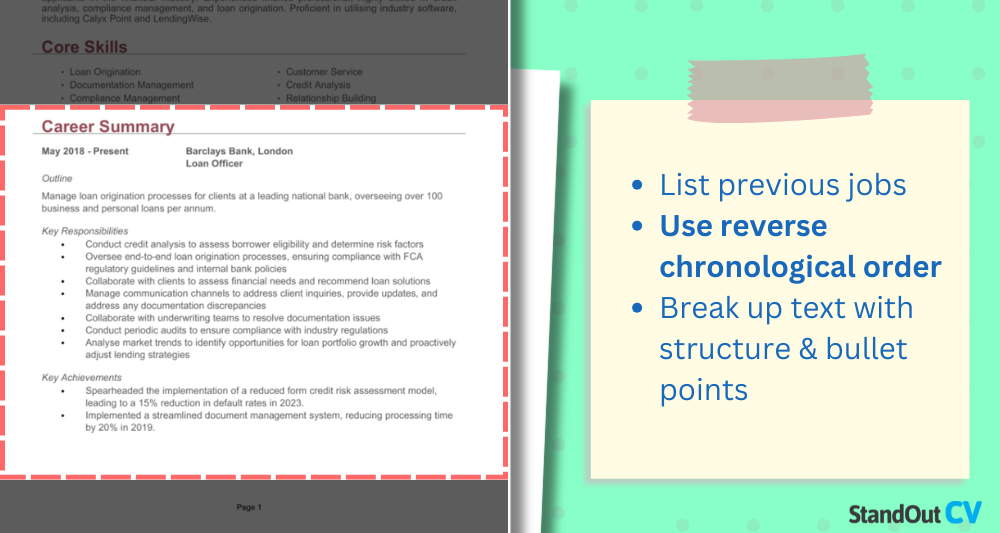
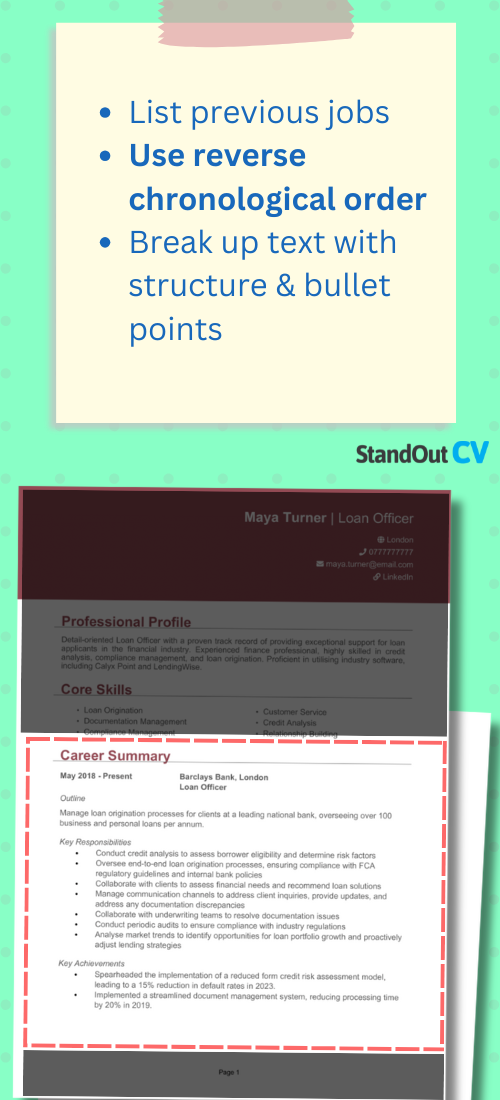
Just because it’s been a while doesn’t mean your work experience is any less valuable. Use this section to remind employers of what you’ve done and the impact you’ve made. List previous roles in reverse chronological order and be proud of your track record.
If you’ve done anything work-related during your break – freelance projects, volunteering, consulting, even managing a personal venture – consider including it too. And if your break was full-time and non-work-related, feel free to include it as a short, clearly-labelled entry (e.g. “Career break for family commitments, 2023–2025″), then focus on what you’re doing now to return.
How should you list jobs on your Career Break CV?
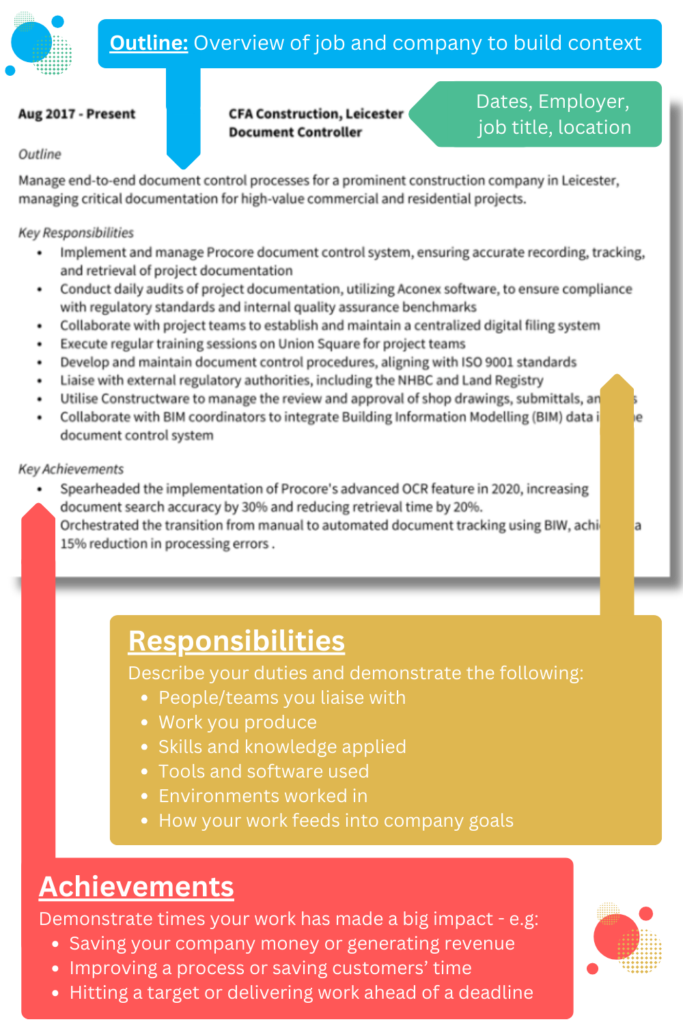
- Outline – Explain your position, the company, and the type of work environment.
- Responsibilities – Describe key tasks and contributions, using action words like “led,” “managed,” or “supported.”
- Achievements – Include tangible outcomes – performance improvements, cost savings, successful projects, etc. A great tip is to sprinkle in some numbers wherever possible, to make things more tangible.
Work history examples for Career Break
Career Break
Outline
Took a planned career break to focus on family commitments, volunteering, and skill development, while maintaining readiness to return to a professional environment.
Responsibilities
- Managed household finances, logistics, and scheduling in a high-responsibility role.
- Completed online courses in Excel, digital marketing, and project management fundamentals.
- Volunteered regularly at a local food bank and school, supporting administration and coordination tasks.
- Maintained professional network and attended industry webinars to stay up to date.
- Balanced multiple responsibilities and adapted to changing priorities effectively.
Achievements
- Improved time management and organisational skills through daily planning and multitasking.
- Earned certificates in Microsoft Office and basic project management via LinkedIn Learning.
- Received recognition from volunteer organisers for commitment and reliability.
Volunteer | Westmoor Food Bank
Outline
Supported daily operations and donation drives during a career break, contributing to the delivery of community services and logistics coordination.
Responsibilities
- Managed records of food inventory and supported weekly distribution planning.
- Assisted in coordinating volunteer rotas and responding to public enquiries.
- Created posters and flyers to promote fundraising campaigns and events.
- Helped organise seasonal initiatives including holiday meal packs and school supply drives.
- Liaised with local businesses to arrange sponsorship and in-kind donations.
Achievements
- Helped increase food donation volume by 40% through improved outreach materials.
- Recognised by management for attention to detail and reliability.
- Supported a team of 15+ volunteers, improving scheduling efficiency.
Freelance Admin Support | Self-Employed
Outline
Undertook part-time administrative tasks for a local start-up during a career break, maintaining professional skills while working remotely.
Responsibilities
- Handled email correspondence, document formatting, and spreadsheet updates.
- Created and maintained simple bookkeeping records using Excel and Google Sheets.
- Assisted with social media content scheduling and basic research tasks.
- Organised shared folders and improved file-naming conventions for clarity.
- Communicated regularly with the founder to ensure task completion and priorities.
Achievements
- Helped streamline daily admin processes, reducing duplication and saving time.
- Delivered consistently accurate and timely work with minimal supervision.
- Maintained client satisfaction throughout the contract term.
Presenting your education history
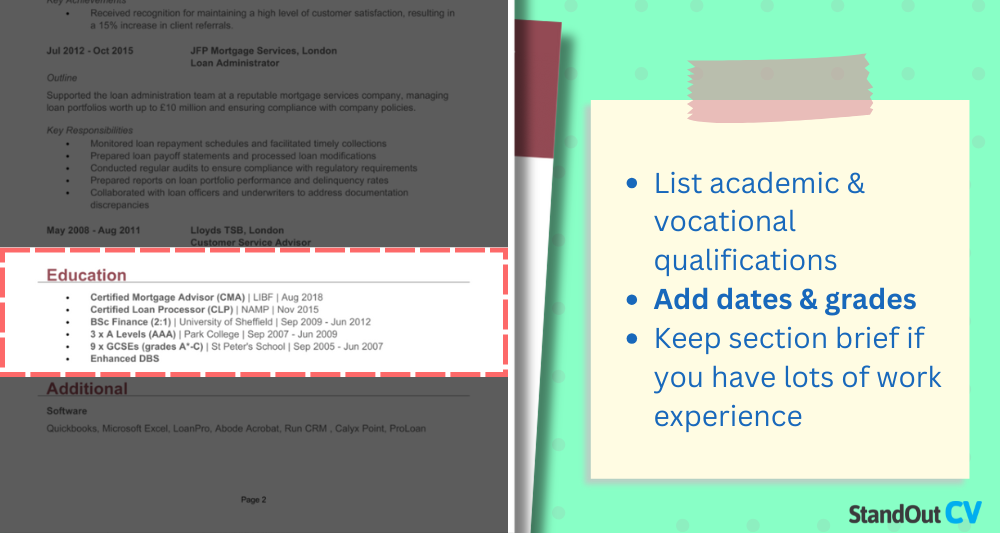

A strong education section is especially helpful when you’re returning to work. List your qualifications clearly in reverse order, including degrees, diplomas, and professional certifications. That said, your experience is always more valuable: so keep this section brief.
If you’ve taken any training or courses during your time away – whether online, through a professional body, or as part of a returner programme – this is the place to show it. It proves initiative and helps bridge the time between your last role and now.
Best qualifications for a Career Break
- Bachelor’s Degree or Higher Education Qualification – A strong foundation, even if completed years ago.
- Professional Certifications (e.g. CIPD, PRINCE2, AAT) – Great for returning professionals looking to upskill.
- Return-to-work programme completions – Shows targeted career re-entry effort.
- Online Courses or CPD – Demonstrates proactive self-development during time away.
- Industry-specific refresher training – Useful for demonstrating you’re up to date with current practices.


